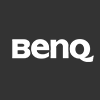About the School
PINGUIN Kindertagesstätte is a private daycare center that aims to provide socio-pedagogical care for students in Aurich, Germany and its surrounding areas. Originally established as a kindergarten in 1971, they have since expanded their operations by offering nursery, daycare, and after-school care services.
PINGUIN’s self-directed curriculum aims to develop each child’s particular strengths through activities that encourage them to learn and explore concepts independently. For their work in childcare, they were awarded Kita of the Year (Daycare Center of the Year) in 2020, the highest distinction of the Deutscher Kita-Preis.




The Challenge
Over the years, PINGUIN’s board of directors and pedagogical specialists have strived to modernize their facilities so they can fully transition into a Kindergarten 4.0 establishment. The Kindergarten 4.0 concept implies that early learning institutions must adapt to the present needs of children, who are now digital natives that are well-versed with the use of technology.
“We began digitalizing PINGUIN some time ago,” says Mieke Matthes, pedagogical assistant. They rolled out the upgrades incrementally, starting with going paperless and moving student registration and school announcements online. They also enhanced their building security by enforcing NFC login for parents and guardians. These developments eventually carried over to the way they implemented pedagogy.
“It was challenging to look for a product that could fit all our media plan criteria,” says Frank Meyer, head of PINGUIN’s after-school club. Their educational staff needed an edtech solution that they could use in teaching subjects like language and math in a more engaging manner. And with PINGUIN’s special focus on self-directed learning, there was a bigger need to look for tools that were simple enough for kids to operate on their own.
“It had to be interactive and self-explanatory,” says Matthes.
BenQ Solutions
With their criteria all set, the PINGUIN staff reviewed a number of available solutions and ultimately acquired several BenQ Boards for their school.
The 86” screen was an instant draw-in, as the large workspace allows multiple children to simultaneously learn together. The built-in web browser grants them instant access to web-based educational content. Its touchscreen interface, coupled with EZWrite, gives the children an expansive whiteboard that they can use for their activities during learning sessions or as a big canvas that they can doodle on during their downtime.
“With the BenQ Board, we are able to hold learning activities with a level of engagement that was previously unattainable.”
Having several BenQ Boards installed in different areas of the daycare center, staff can utilize them for internal meetings and discussions with parents and guardians. The staff also found the ClassroomCare® features—such as the germ-resistant screen, air quality sensors, as well as flicker-free and low blue light technologies—to be good additions to their learning spaces.




The Results
“With the BenQ Board, we are able to hold learning activities with a level of engagement that was previously unattainable,” says Meyer. In his experience teaching third- and fourth-graders, he notes a shift in their attitudes in class. Compared to when the kids learned using materials like magazines and other printed media, they are now more excited to get their hands on the large touchscreen. “It makes them feel more independent,” he says.
“With the BenQ Board, we’re one more step closer to Kindergarten 4.0... It has fully met, if not exceeded, our expectations.”
“It’s different,” says Renke Mannott, one of PINGUIN’s teachers. “The children are more eager to participate when I ask if they want to join me on the display. You see the difference when they interact with the materials I prepared on screen. They are more motivated to learn.”
Mannott further gives an example of how the kids currently utilize the interactive display for active learning: “If a child has a challenging math problem that they need to solve, he or she can write it on the board so that their peers in the after-school program can help them solve it.”
“With the BenQ Board, we’re one more step closer to Kindergarten 4.0... It has fully met, if not exceeded, our expectations,” Matthes says.

